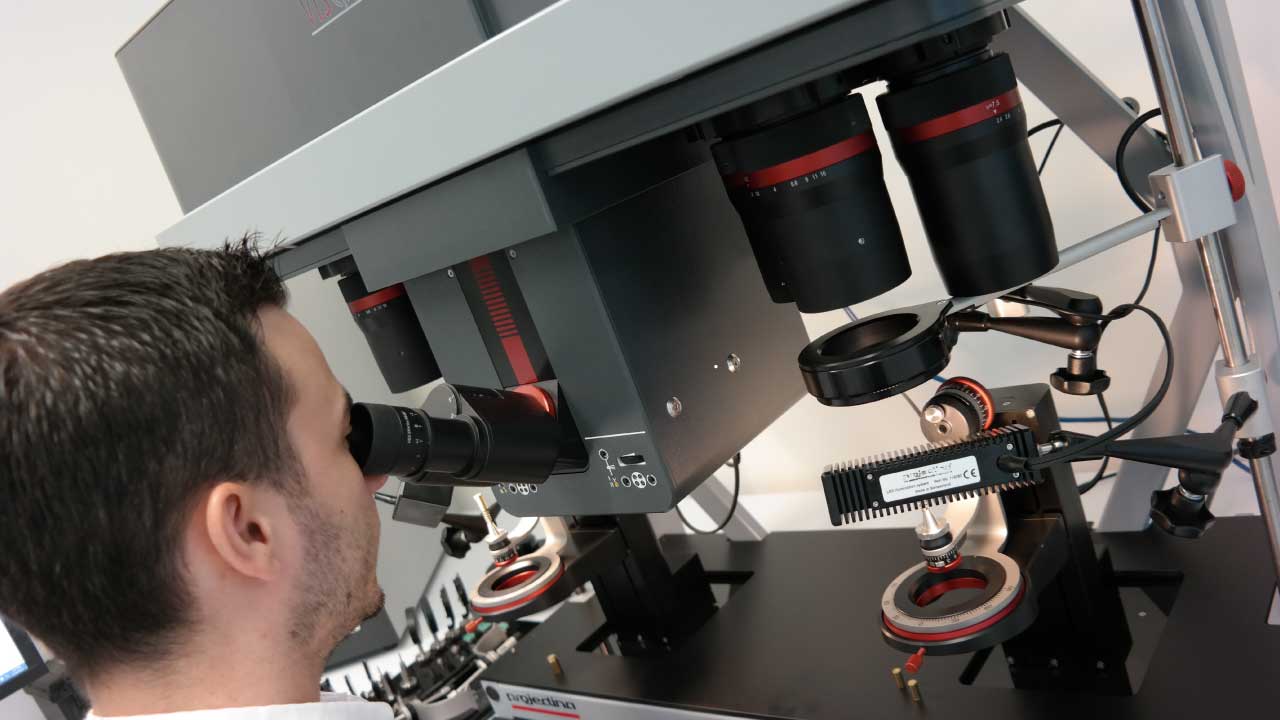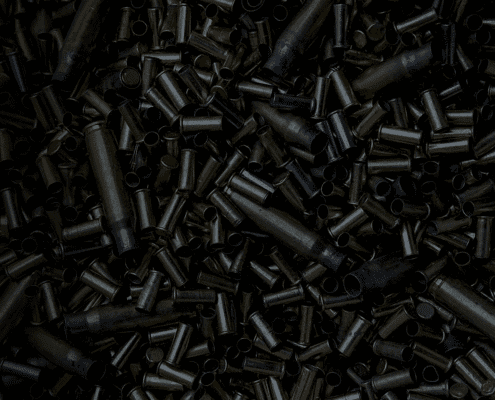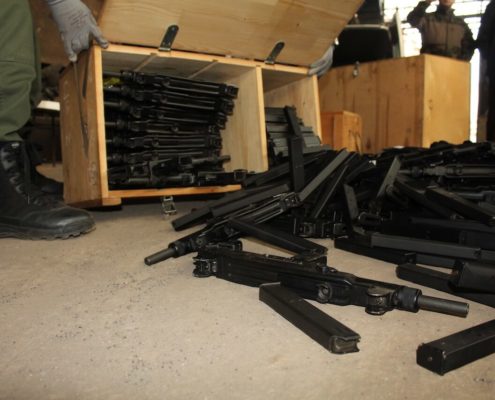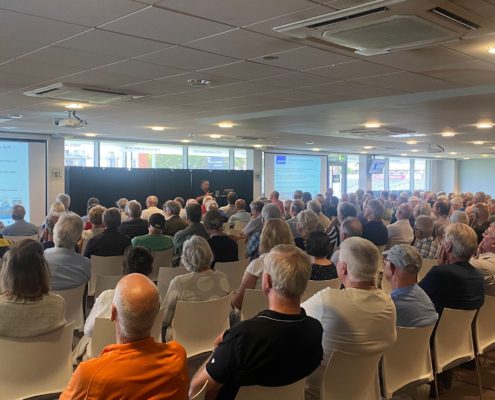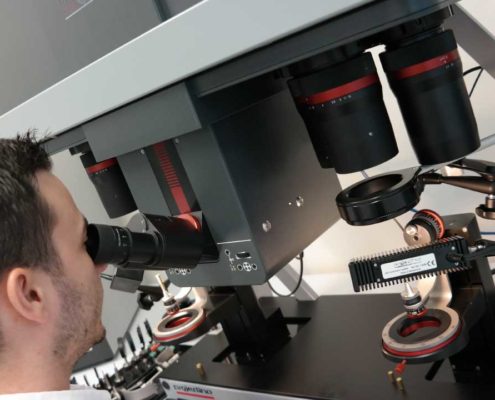 https://arquebus.uk/wp-content/uploads/2025/11/blog-cropped-v1-scaled.jpeg
1695
2560
Glenn Lawrence
https://arquebus.uk/wp-content/uploads/2022/02/Asset-1arquebus_logo.svg
Glenn Lawrence2025-11-24 09:38:142025-11-24 09:48:05Advancing Forensic Excellence in Montenegro: Ballistic Shooting Scene Incident Reconstruction Training
https://arquebus.uk/wp-content/uploads/2025/11/blog-cropped-v1-scaled.jpeg
1695
2560
Glenn Lawrence
https://arquebus.uk/wp-content/uploads/2022/02/Asset-1arquebus_logo.svg
Glenn Lawrence2025-11-24 09:38:142025-11-24 09:48:05Advancing Forensic Excellence in Montenegro: Ballistic Shooting Scene Incident Reconstruction TrainingThe diversion of small arms, light weapons and their ancillaries (SALW) into illicit circulation fuels SALW misuse, with the prevention of diversion being a critical objective of many national SALW control strategies (NSCS). Depending on a state’s requirements, authorities might consider the implementation of a Legal Test-fire Programme (LTFP), leveraging ballistics forensics to collect, process and analyse data on the ballistic signatures of legally held firearms to detect and deter SALW diversion and misuse.
§
The diversion of SALW to unauthorised end-users and their subsequent misuse can have severe impacts upon human security. This includes direct impacts such as mental and physical harm to and the death of individuals, in addition to indirect impacts such as the exasperation or prolonging of inter-communal tensions, state instability and reduction in the population’s trust in the state to guarantee their security.
A NSCS might seek to implement a legal test-fire programme (LTFP), harnessing ballistic forensics to improve the deterrence, detection and investigation of SALW diversion and misuse. LTFPs are designed to record the ballistic signatures of legally held firearms, which are then analysed and compared with recovered discharged ballistic material. This can support the identification of firearms that have previously been test-fired, providing law enforcement with key intelligence that can further investigations into firearm diversion and misuse.
It is important to note that not all NSCS require a LTFP, with the need for and design of a LTFP being highly dependent on the type of firearm threats a jurisdiction is experiencing. For example, authorities might conduct a scoping mission which identifies a state agency as potentially misusing or diverting firearms, and therefore conduct a LTFP of state-held firearms. Equally, analysis could indicate that a certain legal category of civilian-held firearm is more at risk of being diverted or misused, prompting a civilian LTFP targeting such firearms. Crucially, ensuring that LTPFs are intelligence-led and tailored to meet the needs of an NSCS is vital to their success.
Before implementing a LTFP, authorities should engage with all relevant stakeholders to understand their concerns and requirements. For example, civilian LTPFs should consult public stakeholders such as licensed firearms owners, sports shooting and hunting clubs, in addition to commercial stakeholders, such as manufacturers, gunsmiths and firearms dealers to gauge public sentiment and appeal for cooperation. Depending on its scope, a LTFP can be resource intensive, so ensuring that the programme is necessary, fit-for-purpose, and that it has stakeholder buy-in is necessary to maximising a LTFP’s added value to a NSCS.
Once a jurisdiction has decided that a LTFP is required, authorities can begin the collection of firearm ‘test-fire controls.’ Test-fire controls refer to pristine ballistic material (typically bullets and cartridges) recovered once a firearm is discharged into a projectile recovery system such as a water tank. Ideally, at least 2-3 test-fire controls are recovered per barrel from every firearm being test-fired, using multiple brands of ammunition with varying material compositions of the casing, primer and bullet metal-jackets. This ensures that test-fire controls will sufficiently reflect the ballistic signature of the test-fired firearms.
The collection phase of a LTFP can occur at various points throughout the lifecycle of a firearm. For example, test-fire controls could be recovered at the point of a firearm’s import or manufacture, as part of the civilian licensing and registration process, or in a back-capture operation to test-fire firearms already in state or civilian circulation. The schedule of collection of test-fire controls from each firearm may vary, potentially occurring every 2-5 years to account for gradual changes in the ballistic signature. This requirement’s application is contextually dependent upon factors such as the firearm’s usage, how regularly its internal surfaces are cleaned, the conditions in which it’s stored, in addition to resource and personnel constraints. As the ballistic signature of a firearm might change, developing a framework to accommodate the collection of test-fire controls is critical to ensure that the added value of the LTFP is sustained over time.
Collected test-fire controls then need to be processed by a ballistics laboratory, which requires sorting, referencing, and storing the items using a standardised process. Ideally, test-fire controls should be assigned a unique reference number that is either etched or attached onto the material in a way that does not damage the ballistic signature on the test-fire control. Authorities may then link this code with the test-fired firearm’s unique reference number contained within a SALW lifecycle management registry. Test-fire controls must then be sorted and packaged appropriately, before being stored in a controlled environment that limits the item’s exposure and limits the risk of oxidation.
How the ballistic laboratory then utilise the test-fire controls is highly dependent on the form of LTFP which is being implemented: active or passive. Active LTFPs require all test-fire controls to be digitally captured into an automated ballistic identification system (ABIS), which will then automatically cross-check the ballistic signature with any previous and/or future entries into the system from previous firearm-related crimes or incidents. Passive LTFPs keep the test fire controls in storage and only analyse them once the laboratory receives an intelligence report indicating the test-fired firearm has been lost, stolen or potentially misused.
When deciding between an active or passive LTFP, authorities might consider the type of firearm diversion and misuse in their jurisdiction, as well as the resources they are willing to allocate to a LTFP. Active LTFPs are more costly to run compared to passive LTFPs, necessitating more personnel hours and ABIS technology, owing to the greater quantity of test-fire controls that need to be acquired in an ABIS. However, there are scenarios where an active LTFP may be preferential despite these increased costs. For example, if law enforcement suspect that service firearms are being rented or lent to unauthorised end-users. As the firearms are not being reported as lost or stolen, a passive LTFP would fail to detect this. It is the authorities’ discretion to assess the firearm-related risks in their jurisdiction, evaluate their capacity, and decide whether to apply an active or passive LTFP.
No matter the form of LTFP, once a test-fire control has been processed it can then be analysed by a forensic laboratory. Test-fire controls acquired with an ABIS can be cross-checked with other entries in the system, identifying potential matches with any exhibits recovered from firearm-related crimes which are then confirmed by forensic microscopy. If a forensic laboratory does not possess an ABIS, potential matches can instead be identified manually via forensic microscopy, although this process is slower. When an examiner identifies a match, it uncovers new potential investigative opportunities, aids Intelligence-led Policing, in addition to providing key evidence that can be used to prosecute offenders.
EU Project REGISYNC identified Lithuania’s LTFP as an example of LTFPs in practice. Since 1994, the country has operated a mandatory LTFP for civilian-held legal category B short firearms and their spare barrels, with Lithuanian dealers that import such firearms being required to submit them for test-firing before sale. Recovered test-fire controls are then put into storage and assigned a ‘test-fire packing slip’, which includes an alphanumeric code which matches a firearm’s unique reference number in Lithuania’s national firearm registry. As a passive programme, test-fire controls are only digitally captured in an ABIS once the national registry has identified the associated firearm as having been lost or stolen.
It is important to recognise that a successful LTFP does not always require a large number of hits between test-fire controls and lost or stolen firearms – in Lithuania, only one positive match occurred in 2022. Low matches are not necessarily indicative of an ineffective LTFP, with Lithuania indicating a core perceived benefit of its LTFP being the deterrence of misuse for a category of firearm which presents an increased risk profile. Whilst deterrence is difficult to quantify, it is assumed that if criminals are aware that firearms are test-fired, then they are less likely to engage in misuse or diversion, thereby supporting the preventative aims of a NSCS.
A state LTFP can also have the benefit of providing transparency and accountability to the firearm-related activities of state security agencies. In some jurisdictions, public confidence in state security agencies is low, especially when there have been high-profile cases of police or military personnel engaging in firearm misuse or diversion. A LTFP targeting firearms assigned to state security agencies can assure civilians that there is sufficient oversight of state-held firearms, improving public confidence in the ability of the state to legitimately guarantee their security, whilst potentially indirectly decreasing civilian firearms demand.
§
In summary, this blog post has provided an overview of the considerations a jurisdiction should make before conducting a LTFP as part of a NSCS, has discussed the steps to implement an effective LTFP, and covered the potential benefits that LTFPs can have in helping an NSCS reduce firearm misuse and diversion.
Next month’s blog post will discuss the crucial role that physical security and stockpile management (PSSM) plays in an NSCS, providing state security agencies with the necessary infrastructure to improve accountability and prevent the diversion from state-held SALW.
